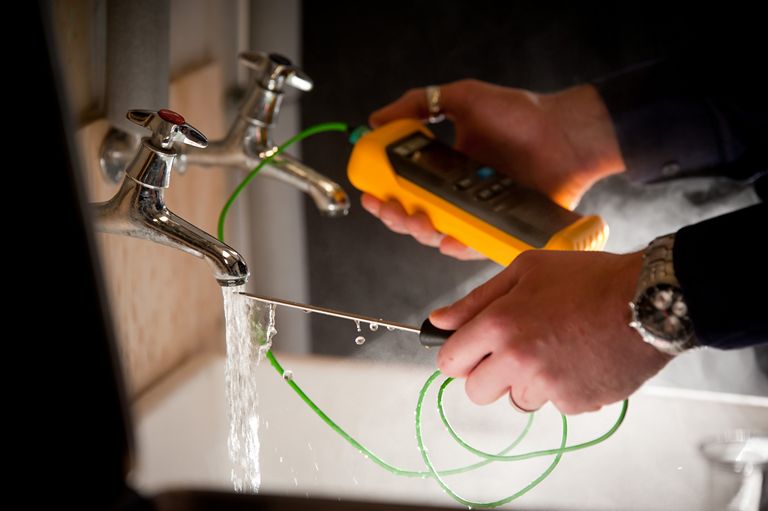Remedial actions: Do I have to do all of them?
Remedial actions: Do I have to do all of them and how do I choose the correct contractor?
Welcome back to the top 5 problems schools face with legionella risk assessments!
In our last month, I am going to try and help you answer question 5. If you have a problem or question that is not covered, please email holly@dantek.co.uk
 Top 5 problems with legionella risk assessments!
Top 5 problems with legionella risk assessments!
- April’s Blog: Is your Legionella risk assessment current and when does it need to be updated? How will you know?
- April’s Blog: Written scheme. What is it and how do I write one?
- May’s Blog: How safe can my school ever be?
- May’s Blog: Asset registers. Mind-blowing pages of cold taps, hot taps and mixer valves etc. What’s the point?
- June’s Blog: Remedial actions: Do I have to do all of them and how do I choose the correct contractor?
Remedial actions are an essential part of lowering the risk of Legionella following a risk assessment. These actions involve improving the design of your water system and may include removing redundant pipework, cleaning cold water storage tanks, insulating pipework, servicing thermostatic mixer valves, and more. Prioritization of these actions is recommended based on urgency, with some requiring attention within a month, three months, or longer.
It’s worth noting that you don’t necessarily have to complete all the recommended remedial actions if you have budget constraints. By reviewing your risk assessment report, you can determine which actions are necessary to reduce tangible threats and which are tolerable risks.
If you need assistance with your school’s Legionella risk assessment, Dantek can help. We hope our past articles have helped you understand the importance of Legionella risk assessments and the common issues faced while receiving them. Finding a reputable contractor for your school’s needs can be challenging, but the Legionella Control Association (LCA) provides a register of companies that have met their requirements and passed their annual audit of systems.
The LCA’s code of conduct sets out the standard of service a client should expect from a water hygiene provider, requiring them to establish an appropriate management system for controlling Legionella and comply with the latest HSE guidance. By visiting https://www.legionellacontrol.org.uk/directory, you can search for a registered contractor by company or region.
At Dantek, we strive to provide the best service in the industry and act quickly to resolve the most urgent tasks. While we offer national coverage for Legionella risk assessments in schools, we may not be able to maintain our high standards for customers outside our geographic region. We believe in working together with schools as a team to solve problems in the real world.
Supported School Regions all services:
1. South West
2. West Midlands
3. South Wales
Contracted and one-off services we offer.
1. Legionella Risk assessments
2. Cleaning & disinfection of cold-water storage tanks
3. Temperature monitoring
4. Calorifier inspections
5. Showerhead cleaning and disinfection
6. Thermostatic mixer valve serving and fail-safe testing.
7. Expansion vessel flushing
8. Water softener servicing
9. Closed system analysis.
10. Chlorine dioxide rental service
11. Chlorine dioxide installation and maintenance
12. Sampling (Legionella, TVCC, Pseudomonas)
13. Logbook user training
14. Responsible persons/management training
Included within all our contracts is our free-of-charge electronic logbook for all service users. Contact us now for a free demo.
If you would like to speak to us regarding any of our products or services, please do not hesitate to contact us at 01454 417 920 or e-mail your enquiry to sales@dantek.co.uk where a member of our team is available to help you. Please quote #SCHOOL’S which will allow our 2022 day rates to be quoted saving you 5%
#legionellacontrolinyourschool #legionellacontrol #riskassessment #legionellariskassessment #teamdantek #legionellaadvice #riskassessmentproblems #safeschools #remedialactions #assetregister #riskassessmentupdate #writtenscheme #legionellacontractorsouthwest #legionellacontratorsouthwales #legionellacontractorwestmidlands

Don’t just take my word for the level of service, expertise, and confidence that our team provides. I have included 3 testimonials below. Read what our educational establishments say about us below!
“As a senior maintenance manager for the University of South Wales I am responsible for 5 campuses, that’s around 1300 student apartments and 60 additional buildings. Dantek carries out Legionella testing and risk assessments for all these including, calorifiers, showers and water tanks. They are a good company to work with and have an excellent online monitoring system which allows them to upload test results for our compliance section to audit online. With Legionella you don’t want to take any risks and Dantek is really good at keeping us informed of what we need to do to keep our water safe and remain compliant. I would happily recommend them.”
Senior Maintenance Manager, University of South Wales
“Dantek manages Legionella control and all related compliance issues for Millfield. As the H&S Advisor I need to rely on the expertise of the companies that I work with. Dantek instils that confidence, if I go to them with any issues they always have the answer.
I also wanted to work with a company that Millfield could build a strong relationship with. The staff are reliable, responsive, honest and polite. If I have any issues they’ll always find the time to discuss them with me in order to find agreed solutions.”
H&S Advisor, Millfield School
“I cannot fault the service and your staff are always well presented and polite”
University of Bath – renewal of showerhead cleaning and disinfection contract

